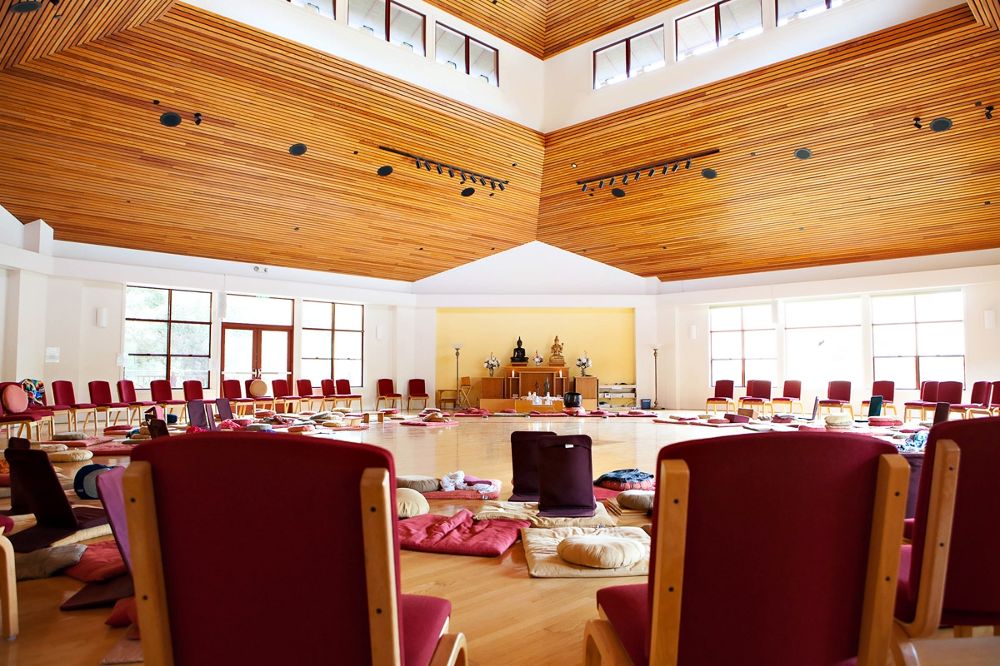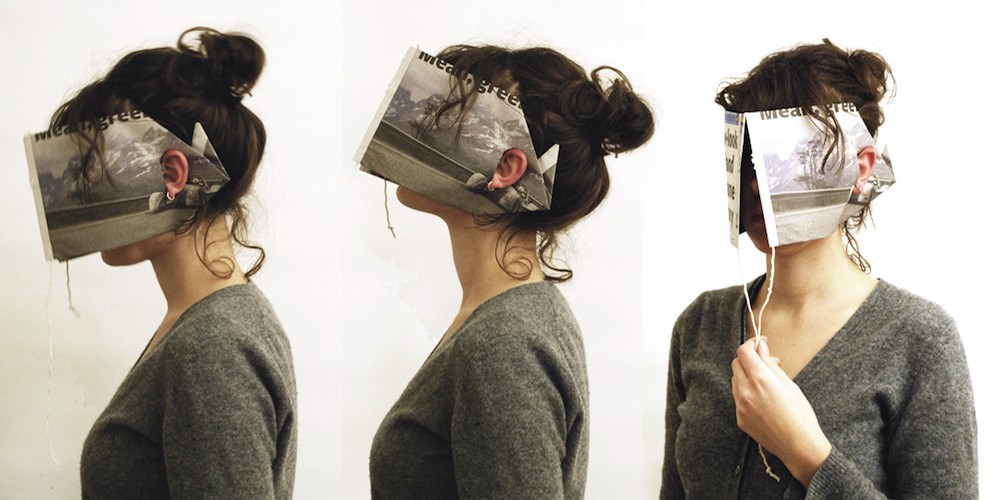Same, But Different
In the Study and Practice class I’ll be teaching next month on the Satipatthana Sutta, I’ll use Bhikkhu Sujato’s relatively new translation of this foundational text as well as the more familiar translations by Bhikkhu Bodhi, Bhikkhu Analayo, Thanissaro Bhikkhu, and others.
I like them all. Of course, they each have their pluses and minuses — but I do like the relative plain-spoken-ness of this new one, plus the fact that it uses of non-gendered pronouns.
Here’s Bhikkhu Bodhi’s familiar translation of the opening section of the sutta (MN10), which he titles “The Foundations of Mindfulness“:
Thus have I heard. On one occasion the Blessed One was living in the Kuru country where there was a town of the Kurus named Kammāsadhamma. There he addressed the bhikkhus thus: “Bhikkhus.”—“Venerable sir,” they replied. The Blessed One said this:
“Bhikkhus, this is the direct path for the purification of beings, for the surmounting of sorrow and lamentation, for the disappearance of pain and grief, for the attainment of the true way, for the realization of Nibbāna—namely, the four foundations of mindfulness.
“What are the four? Here, bhikkhus, a bhikkhu abides contemplating the body as a body, ardent, fully aware, and mindful, having put away covetousness and grief for the world. He abides contemplating feelings as feelings, ardent, fully aware, and mindful, having put away covetousness and grief for the world. He abides contemplating mind as mind, ardent, fully aware, and mindful, having put away covetousness and grief for the world. He abides contemplating mind-objects as mind-objects, ardent, fully aware, and mindful, having put away covetousness and grief for the world.
Here’s Bhikkhu Sujato’s translation, which he titles “Mindfulness Meditation“:
So I have heard. At one time the Buddha was staying in the land of the Kurus, near the Kuru town named Kammāsadamma. There the Buddha addressed the mendicants: “Mendicants!” “Venerable sir,” they replied. The Buddha said this:
“Mendicants, the four kinds of mindfulness meditation are the path to convergence. They are in order to purify sentient beings, to get past sorrow and crying, to make an end of pain and sadness, to complete the procedure, and to realize extinguishment.
What four? It’s when a mendicant meditates by observing an aspect of the body—keen, aware, and mindful, rid of desire and aversion for the world. They meditate observing an aspect of feelings—keen, aware, and mindful, rid of desire and aversion for the world. They meditate observing an aspect of the mind—keen, aware, and mindful, rid of desire and aversion for the world. They meditate observing an aspect of principles—keen, aware, and mindful, rid of desire and aversion for the world.
***
Click here for the full translation of MN10 by Bhikkhu Bodhi. Click here for the full translation by Bhikkhu Sujato.
Interested in taking the class? Email me here.
YAY!!!
My DPP and CDL dharma buddies Carolyn, Alice, Helen, and I (and probably others who I haven’t heard from yet) all got accepted into the next cohort of Spirit Rock’s Advanced Practitioner Program (APP2).
I AM SO PSYCHED!!!
As posted on Spirit Rock’s website:
“APP2 is intended for senior students of the Dhamma who want to explore the liberation teachings of the Buddha through practice, study, inquiry, and interactive exercises. It is a year-long program consisting of three retreats and is intended for those who have completed programs like Spirit Rock’s Dedicated Practitioners Program (DPP), Community Dharma Leader Program (CDL), Heavenly Messengers (HM), or an equivalent.”
The retreats are:
* Nature of Awareness, April 15 – 23, 2019 (8 nights), led by Phillip Moffit, Guy Armstrong, Susie Harrington, Anushka Fernandopulle, Brian Lesage with Dawn Scott assisting.
“Awareness is the heart of sentient life, the central faculty that reveals the phenomena of our experience. Usually, in both meditation and daily life, we pay most attention to phenomena and less to awareness itself. This retreat is an opportunity to focus on the nature of awareness and to explore this mysterious, innate capacity for knowing. This practice can open the door to emptiness, profound understanding and great freedom.”
* Emptiness and Liberation, November 12 – 20, 2019 (8 nights), led by Gil Fronsdal, Susie Harrington, JoAnna Hardy, Brian Lesage with Dawn Scott assisting.
“This retreat is a further development of a senior students retreat on Emptiness previously held at Spirit Rock. While retaining the teachings on emptiness, this retreat will add more direct pointing to the steps toward liberation as described by the Buddha as well as ancient and contemporary meditation masters. We will introduce and explore teachings and practices that lead to awakening through talks, readings, reflections, guided meditations, and group discussions.”
* Radiant Mind, Peaceful Heart, April 2 – 10, 2020 (8 nights), led by Venerable Bhikkhu Analayo, Guy Armstrong, Susie Harrington, Anushka Fernandopulle, Brian Lesage with Dawn Scott assisting.
“This third retreat of the program will focus directly on the topic and practices leading toward liberation. Joining the teaching team will be Venerable Bhikkhu Analayo, a foremost scholar and practitioner who will share through presentation and practice instructions, the Buddha’s instructions on Compassion and Emptiness, pointing to full liberation. There will also be interactive study and practice sessions throughout the week, with a period of intensive practice in the depth of the retreat. This retreat will include sessions on how to continue these practices and supporting each other once the program has ended.”
***
AWESOME!!!
Awareness. Emptiness. Radiance.
Applications are now being accepted for Spirit Rock’s next Advanced Practitioner Program (APP2) and — surprise, surprise — I’ve applied!
The APP is a year-long study-and-practice program for experienced students (those who have completed either the Dedicated Practitioner Program or the Community Dharma Leader program). The structure is a lot like DPP and CDL, with monthly homework, small-group meetings, one-on-one mentoring, and three related retreats:
- Nature of Awareness, April 15 – 23, 2019 (8 nights), at Spirit Rock with Phillip Moffit, Guy Armstrong, Susie Harrington, JoAnna (Harper) Hardy, Brian Lesage with Dawn Scott assisting.
- Emptiness and Liberation, November 12 – 20, 2019 (8 nights), at Spirit Rock with Gil Fronsdal, Susie Harrington, JoAnna Hardy, Brian Lesage with Dawn Scott assisting.
- Radiant Mind, Peaceful Heart, April 2 – 10, 2020 (8 nights), at Spirit Rock with Venerable Bhikkhu Analayo, Guy Armstrong, Susie Harrington, JoAnna Hardy, Brian Lesage with Dawn Scott assisting.
“The Buddha said that he teaches just suffering and the end of suffering. These retreats will focus on the ending of suffering — Nibbana — and the practices and insights that lead to this ending.” (click here to read more)
Sounds pretty enlightening to me!!!
What do you think, DPP and CDL buddies? Applications are being accepted from now till August 1, 2018.
Check it out.
What We Imagine Ourselves to Be
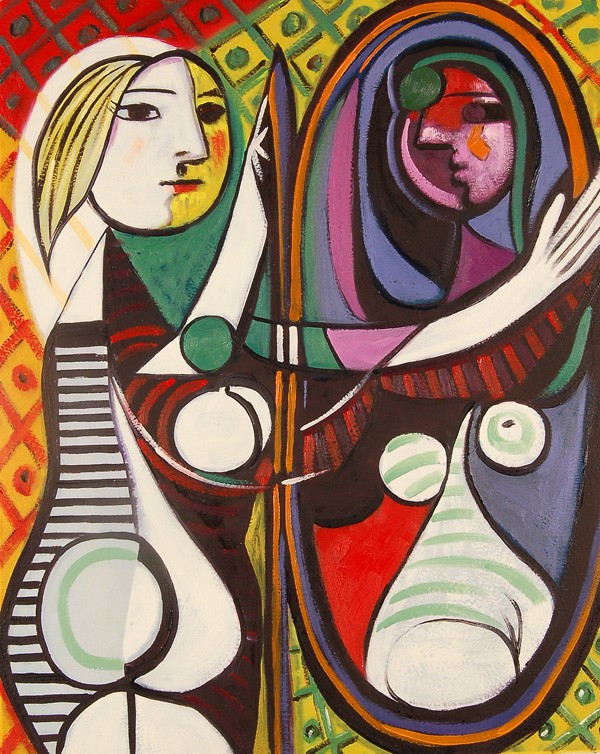 Another one of the readings that’s part of the first session of the “Waking Up to Whiteness” program I posted about yesterday is an article written by Bhikkhu Bodhi, titled: Taking Stock of Oneself.
Another one of the readings that’s part of the first session of the “Waking Up to Whiteness” program I posted about yesterday is an article written by Bhikkhu Bodhi, titled: Taking Stock of Oneself.
Here is an excerpt:
“Normally, in subservience to our need to confirm to ourselves our uniqueness and irreplaceable importance, we proceed to construct mental pictures–indeed, a picture gallery–of what we imagine ourselves to be.
“The self-image that emerges from these pictures becomes simultaneously a mainstay which we cling to in order to maintain our self-esteem and a standpoint from which we orient ourselves toward others and launch our projects in the world. To secure its tenuous status. the mind employed a variety of tactics ‘behind the back’ of our conscious awareness.
“It throws up blinders which keep out disturbing information; it flatters us with fantasied projections; it drives us to manipulate people and situation in ways that will seem to validate our tacit assumptions about our virtues and identity.
“All these projects born of the quest to substantiate our sense of identity only increase our suffering. The more we lock ourselves into the images we form of ourselves, the more we alienate ourselves from others and close off our access to liberating truth. Thence release from suffering requires that we gradually discard our delusive self-images through rigorous examinations of our minds.
“The venerable Sariputta, in the Discourse on No Blemishes (MN5), stresses the role of honest self-assessment as a prerequisite of spiritual growth. He points out that just as a dirty bronze bowl, deposited in a dusty place and utterly neglected, only becomes dirtier and dustier, so if we fail to recognize the blemishes in our minds we will not make any effort to eliminate them, but will continue to harbor greed, hatred and delusion and will die with a corrupted mind….
“The task of self-knowledge is always a difficult one, but it is only by knowing our minds that we will be able to shape them, and it is only by shaping our minds that we can liberate them.”
***
And so we begin.
I Didn’t Know I Was Suffering
I am so grateful for what I learned — for what I have been released from — by working through the “Waking Up to Whiteness” curriculum (organized by members of the East Bay Meditation Center) that I have just formed a new “Waking Up” group and will go through the program again with them.
One of the readings the group will be discussing during our first session is a letter written by Kristin Barker, one of the organizers of the curriculum. Here’s an excerpt:
“There’s good reason we find this work so challenging! In the US, whiteness is made, by whiteness, invisible. In my own life, I was taught not that I was ‘white’ but that I was ‘normal.’ Being ‘just a normal person,’ I was trained to believe that any advantages I have achieved in this life, whatever they are, were owed to my own merit, hard work, or at most to my ‘good fortune.’
“The notion that I have benefitted — and continue to benefit enormously — from not just historical but from the ongoing oppression of others was quite understandably disturbing to my sense of self….
“Suddenly I became aware that people of color knew something about me that I didn’t know, that I was, for instance, wrong in conceiving of myself as ‘normal’ and that I was unknowingly benefiting from — and even perpetuating — the dominance of white people. People of color knew I was white and they knew, so much better than I, what that meant in this world…
“And of course this would challenge me deeply for how painful it is to recognize my role in oppression when I don’t experience myself as ‘doing anything wrong.‘ The only upside to these realizations seemed to be my interest — shaky at times — in truth. And yet there was something more.
“The truth is that I didn’t know I was suffering. The understanding of deep interdependence means that operating in a culture that objectifies, exploits and oppresses, even and especially when hidden from the dominant view, divides the heart against itself. It can be deeply challenging to lean into this. To be willing to look and not waiver is to open to suffering on a massive scale…
“But this is what I want to share and why I wanted to write this letter. The upside is no much greater than I knew, so much greater than just ‘accepting the hard truth’ like a bitter pill. I submit that the upside isn’t even learning to do less harm to people of color, although that is a necessity.
“The upside is wholeness. I have found that, just as promised, if I can turn towards the suffering of racism, against my ego’s self-protecting tendencies, I do experience pain — yet I come to suffer less.
“Some resistance is released. Some wall is dissolved. I may be bewildered and disoriented, but I am strangely more whole. From this place there seems the potential to be (with time and practice) more honest, more courageous and perhaps more truly useful to the causes that move me. My relationships with people of color are more authentic. I can occupy my own location of privilege with more honesty and so much less to defend….
“As uncomfortable, as painful, as disconcerting, as overwhelming as it may be, we have the opportunity to respond individually and collectively, supporting one another in seeing through delusion and making a new way…
“I believe we have an incredible opportunity to know deeply the ways that racial divisions, and all forms of division, maintain our suffering. And in so doing we can not only make ourselves more whole but we can radiate whatever understanding we develop out into our world.…
“May we be wildly successful!”
***
Kristin completely captures my own experience in going through the program. It was hard, but it was liberating!!!
If you’d like more information about the “Waking Up to Whiteness” curriculum or are interested in forming a group of your own, please email me here.
So Now I’m Totally into Pali!
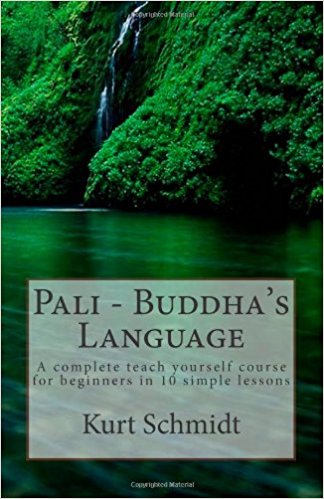 I’m still feeling the effects of taking that course on Vedana, at the Barre Center for Buddhist Studies, where Akincano really opened my eyes to the benefits of comparing several different translations of the same sutta — including jumping in and looking at the original Pali!
I’m still feeling the effects of taking that course on Vedana, at the Barre Center for Buddhist Studies, where Akincano really opened my eyes to the benefits of comparing several different translations of the same sutta — including jumping in and looking at the original Pali!
I’ve even started working my way through a surprisingly readable — and enjoyable! — little book: Pali–Buddha’s Language: A Complete Teach Yourself Course for Beginners in 10 Simple Lessons, by Kurt Schmidt, which includes a website with audio recordings of the Pail lessons that students are encouraged to (STRONGLY encouraged to) memorize.
So I’m doing it!
Starting with this very famous verse from the Dhammapada (Dhp. 5), which Gil Fronsdal translates as:
Hatred never ends through hatred.
By non-hate alone does it end.
This is an ancient truth.
Which Kevin Trainor translates as:
For hatred does not cease by hatred at any time:
hatred ceases by love, this is an old rule.
And Ajahn Sujato translates as:
Hatred is never appeased by hatred in this world. By non-hatred alone is hatred appeased. This is a law eternal.
Here’s the original Pali, with word-for-word translation from the book by Kurt Schmidt:
Na hi verena verani
Not namely through-enmity enmities
sammat’ idha kudacanam
stop here ever
a-verena ca sammanti
through-non-enmity and they stop
esa dhammo sanantano.
this Law (is) eternal.
***
I think this is really cool. So OK. I confess. I’m a total sutta geek!
Go-To Guy
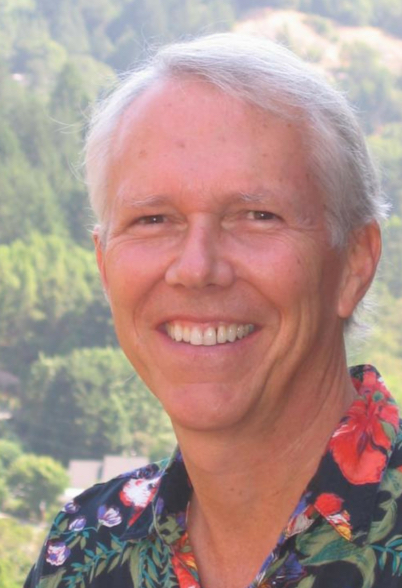 Guy Armstrong is one of my favorites. He was one of the teachers I met with one-on-one every week during my first long retreat (6-weeks at IMS in 2013) and also during the first half of the 2-month retreat I sat this year at Spirit Rock. He’s a member of the Spirit Rock Teachers Council and a guiding teacher at the Insight Meditation Society. (He’s also one of my “go-to” guys when I want a dharma talk I can listen to over and over again — along with Ajahn Sucitto, Phillip Moffitt, Akincano, and maybe one or two others.)
Guy Armstrong is one of my favorites. He was one of the teachers I met with one-on-one every week during my first long retreat (6-weeks at IMS in 2013) and also during the first half of the 2-month retreat I sat this year at Spirit Rock. He’s a member of the Spirit Rock Teachers Council and a guiding teacher at the Insight Meditation Society. (He’s also one of my “go-to” guys when I want a dharma talk I can listen to over and over again — along with Ajahn Sucitto, Phillip Moffitt, Akincano, and maybe one or two others.)
So I am delighted to announce that he’ll be teaching an 8-week online course — Emptiness: A Practical Course for Meditators — which will include live video chats with him. The course is based on his new book, Emptiness: A Practical Guide for Meditators, and will “explore the teachings on emptiness and their application in our ives in a way that makes them practical and accessible.”
It’s a production of Wisdom publications in partnership the Barre Center for Buddhist Studies. The course begins Sept 11. If you register before Aug 5, the cost is $149. ($199 after Aug 5) Click here for more info.
What I’m Cooking Up
 Now that I’ve completed the Community Dharma Leader (CDL) training program, I’m thinking about offering a short introductory course: Mindfulness 101, suitable for beginners or for anyone who’d like a little more guidance on the basic instructions for mindfulness meditation.
Now that I’ve completed the Community Dharma Leader (CDL) training program, I’m thinking about offering a short introductory course: Mindfulness 101, suitable for beginners or for anyone who’d like a little more guidance on the basic instructions for mindfulness meditation.
The course will consist of three sessions, held once a week, for one hour each.
Session 1: Mindfulness of Body
Session 2: Mindfulness of Breathing
Session 3: Mindfulness of Thoughts and Emotions
The course will be offered on a donation basis. It’s best if folks could attend all three sessions, but I’d be OK if someone wanted to drop in for just one or two.
I’ve already reserved space for us to meet in the fall:
Place: Solar Yoga, 6002 Pershing, 63112
Dates: Sunday, Sept 10, 17, and 24
Time: 2:00 to 3:00 pm
If you (or someone you know) would be interested in getting started sooner, please email me here and I’ll see what I can do.
I’ll be sending more info as the time gets nearer. If you want to make sure you’re notified, send me an email.
In the mean time, spread the word!
Kind of Crazy
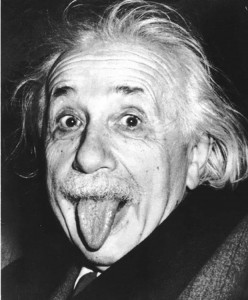 This study of the Abhidhamma is fascinating (and kind of crazy….for example, it says that there is a sequence of 17 separate “mind moments” that occur in the cognitive process of seeing a visual object, which begin with a moment of “life continuum” passing, then “vibrating,” then “being arrested”, then a moment of the mind “adverting” to the “sense door being stimulated” — the eye — then “seeing consciousness” happening, then the seen object being “received into the mind”, etc etc etc).
This study of the Abhidhamma is fascinating (and kind of crazy….for example, it says that there is a sequence of 17 separate “mind moments” that occur in the cognitive process of seeing a visual object, which begin with a moment of “life continuum” passing, then “vibrating,” then “being arrested”, then a moment of the mind “adverting” to the “sense door being stimulated” — the eye — then “seeing consciousness” happening, then the seen object being “received into the mind”, etc etc etc).
But I’m willing to go with it. Because, frankly, it’s not any “crazier” than what modern, Western science has been telling us…and which meditators have been confirming for 2600 years…that what we take to be “real” and “solid” and governed by a “self”….is not.
For example:
“Subatomic particles are not made of any material substance. They have a certain mass but this mass is a form of energy. Energy however is always associated with processes, with activity; it is a measure of activity.
“Subatomic particles, then, are bundles of energy, or patterns of activity. The energy patterns of the subatomic world form stable atonic and molecular structures, which build up matter and give it its macroscopic solid appearance thus making us believe that it is made of some material substance.
“At the everyday, macroscopic level, the notion of a substance is quite useful, but at the atomic level it no longer makes sense. Atoms consist of particles and these particles are not made of any material stuff. When we observe them, we never see any substance; what we observe are dynamic patterns continually changing into one another–a continuous dance of energy.”
— The Turning Point, by Fritjof Capra
Remember to Recognize
 I’m loving this Abhidamma course! For example, I had a little “ah-ha” moment when I was listening to Steve Armstrong give the meditation instructions…after hearing him define “mindfulness” as “remembering to recognize.”
I’m loving this Abhidamma course! For example, I had a little “ah-ha” moment when I was listening to Steve Armstrong give the meditation instructions…after hearing him define “mindfulness” as “remembering to recognize.”
At the beginning of every sit, his instructions are to:
Remember to recognize the present moment experience.
I heard that and I thought: Ah-ha! “Remember” is sati (be mindful) and “Recognize” is sampajanna (clearly know)! As in the traditional instructions where the Buddha describes his followers as “contemplating the body [or breath, or whatever] ardent, clearing knowing, and mindful….”
For me, the instruction to “remember to recognize” suggests a much more specific quality of attention than “bring your awareness to…,” “notice..,” or even “pay attention to….”
It’s one thing to be more-or-less “mindful” of the breath, or body, or whatever’s going on in the mind. And quite another to remember that what I want to do is to actually recognize what’s happening.
Try it!



